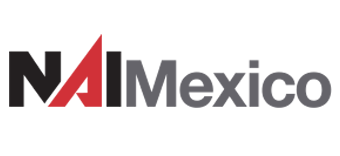Nokia has upgraded a 5G equipment testing facility in Guadalajara, Mexico that it says will support both Latin America and North America.
The Finnish telecom vendor called out the unique location of the lab and the free trade agreement between U.S., Mexico and Canada that makes it easier for goods and services to flow between the three countries.
The lab has already been operating for five years and works closely with Nokia design facilities in Dallas, Texas and Naperville, Illinois. The facility in Mexico has conducted hardware testing including 3G, 4G, and 5G. It also performs testing for product change notification, mechanical analysis, mechanical first article inspection, digital data and power supply analysis, and realistic performance monitoring.
One focus of the upgrade is to support testing across new 5G use cases. In addition to new 5G products the Guadalajara location will serve as support for increased sales and supply chain operations in the region.
“Following excellent results in its four years of operation, we chose to increase our investment in Guadalajara. The lab is located at a unique geographical position to provide services to both Latin America and North America,” said Raúl Romero, head of Nokia LAT North Region and country senior officer for Mexico, in a statement. “Additionally, our 5G deployments coming soon in Mexico and Latin America region will be fully supported by our own regional operations and supported as well by the free trade agreement between the U.S., Mexico and Canada (USMCA).”
RELATED: Nokia profits jump in Q3 amid chip shortage, mobile networks decline
Pedro Rayas, portfolio maintenance and supply chain manager for Mexico at Nokia, in the announcement said that the lab completes performance tests that ensure Nokia products meet a variety of national and international standards.
“Those operations require highly trained professionals and Guadalajara’s position as Mexico’s Silicon Valley assures that we will have access to the specialized technology and telecom professionals required to staff the lab,” said Rayas. “We are very happy to increase our investment in Mexico, to show our commitment to our customers, provide excellent job opportunities and training for our team, while expanding the nation’s 5G influence.”
In the third quarter Nokia reported net sales of EUR 260 million (around $293 million) in Latin America, a 7% increase from Q3 of 2020. North America sales were up 9% to EUR 1.8 billion, although mobile networks saw a decline. According to Nokia, its investment and footprint in Latin America is increasing with more than 3,700 employees working across 14 countries.
RELATED: Nokia CEO aims to catch next wave of 5G investment
The move comes as global supply chain issues inched into the radio access network (RAN) market in the last quarter. On Tuesday Dell’Oro Group released a report that found while ongoing shortages impacted the RAN market in the third quarter it’s still seeing positive momentum.
“The RAN market remains on track for a fourth consecutive year of robust growth, underpinned by healthy demand for connectivity,” said Dell’Oro analyst Stefan Pongratz in a statement. “At the same time, more challenging comparisons combined with increased risks surrounding the supply chain will weigh on the market in 2022.”
The firm’s preliminary estimates indicate the 2G-5G RAN market saw year over year growth for the seventh quarter in a row in Q3. In 2022 it projects total RAN revenues to increase 3%, after two years that saw double-digit growth.
RELATED: Dell’Oro expects RAN market to grow 10-15% in 2021
Pongratz told Fierce the 5G lab upgrade by Nokia appears to be about gearing up for new use cases and the coming 5G ramp in the Latin America region more than addressing short-term supply constraints.
“When it comes to addressing semiconductor supply chain disruptions, I think everyone is making all the preparations they can including adding more sources to the AVL, enhancing relationships with leading suppliers, and building safety stock where possible to minimize impact from price fluctuations and excessive lead-times,” Pongratz said.
According to Dell’Oro, Nokia looks to have been in the No. 2 position among the top 5G RAN suppliers outside of China in the last quarter, alongside competitors Ericsson and Samsung, and No. 3 globally.
Nokia opted not to quantify the impact of component shortages on sales during its third quarter presentation, but CEO Pekka Lundmark categorized it as meaningful and increasing. Along with semiconductor demand far outpacing supply, he noted unprecedented component cost inflation in the industry. Ericsson also started to see a squeeze on individual components in Q3 that resulted in the loss of some sales and higher inventory in the quarter. The Swedish vendor expects supply chain issues to likely impact Q4.




